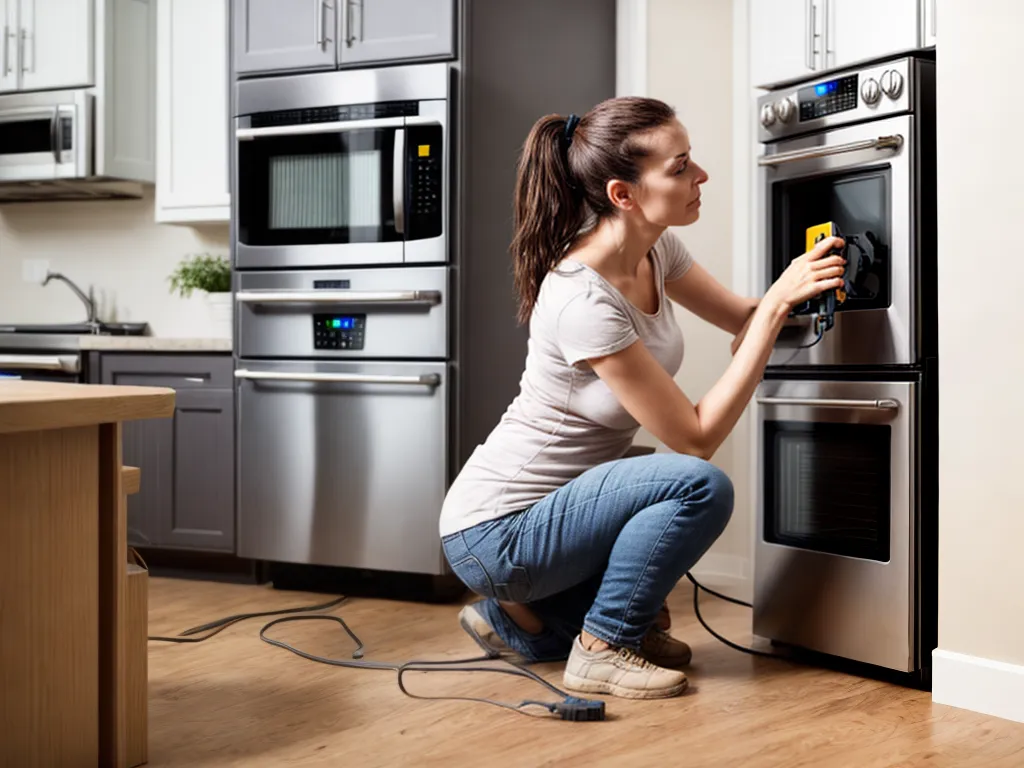
Connecting 240 volt appliances in your home can seem intimidating, but with proper planning and precautions, it can be done safely. As a homeowner, understanding the basics of 240 volt circuits is important when installing appliances like electric dryers, ranges, hot water heaters, and air conditioners. Follow this guide to learn the essential steps for safely wiring 240 volt circuits.
Planning Your 240 Volt Circuit
The first step is planning the circuit details before purchasing any equipment or starting the installation. Here are key factors to consider:
Determine Appliance Power Requirements
- Check the appliance specs or manual to find the voltage, amperage or wattage it requires. This determines the circuit size you'll need.
- For example, an electric dryer may need a 30 amp, 240 volt circuit.
Choose a Location Close to the Main Panel
- Minimize the distance from the main electrical panel to reduce voltage drop.
- Try to place high wattage appliances on their own dedicated circuit.
Select the Correct Wire Size
- Wire must be sized to safely handle the amperage load. For 240V circuits:
- 20 amps - use 12 AWG wire
- 30 amps - use 10 AWG wire
- 50 amps - use 8 AWG wire
- Copper wire is preferred for safety and conductivity.
Include a Ground Wire
- A ground wire is critical for preventing shocks and for appliance functionality.
- Use a 3-wire cable with separate ground for 240V circuits.
Choose an Appropriate Disconnect
- A shut-off switch or circuit breaker must be installed for safety and maintenance.
- Choose a 240V rated option with amperage to match circuit capacity.
Working Safely with 240 Volt Circuits
240 volt circuits carry twice the voltage as standard household 120 volt circuits. Take precautions when handling 240V wiring to avoid shocks, burns, or electrocution:
Turn Off Power at Main Breaker Panel
- Switch the main breaker to off before working on any wiring.
- Verify power is off with a non-contact voltage tester.
Use Caution When Removing Covers
- Unscrew cover plates slowly and carefully. Watch for any exposed wires.
Wear Protective Equipment
- Wear insulated gloves, long sleeves, safety goggles and rubber soled shoes.
Avoid Working Alone
- Have someone available to switch power off or call for help if needed.
Connect Securely
- Use wire nuts or crimp connectors listed for the wire gauge. Tighten securely.
- Don't allow bare wire ends to show.
Wiring a 240 Volt Circuit
Once you have chosen suitable circuit components, you can install the wiring. Here is an overview of the process:
1. Turn Off Main Power
Double check that the main breaker is off using a contactless voltage tester.
2. Run Cable from Panel to Appliance
- Use cable of adequate gauge for the amperage, like 8 AWG for 50 amp circuit.
- Run cable through studs or joists, stapling at regular intervals.
3. Install Circuit Breaker in Main Panel
- Choose a 240V breaker with correct amp rating for the circuit size.
- Take care working inside the main electrical panel.
4. Connect Wires at Breaker
- Attach cable hot wires to breaker terminals (L1, L2).
- Connect ground wire to panel ground bar.
5. Connect Wires at Appliance
- Attach hot wires to appliance terminals.
- Connect ground wire to appliance ground screw.
6. Securely Cap All Connections
- Use wire nuts or crimp connectors suitable for the gauge.
- Avoid exposed conductors.
7. Test Operation
- Restore power and test appliance functionality.
- Confirm ground connection with receptacle tester.
Following proper precautions and installation techniques will allow you to safely add 240 volt appliances as your home's electrical needs grow. Hiring a licensed electrician is recommended if you are unfamiliar working with high voltage wiring. Taking the time to plan and install 240 volt circuits correctly will provide reliable service for powering large appliances in your home.